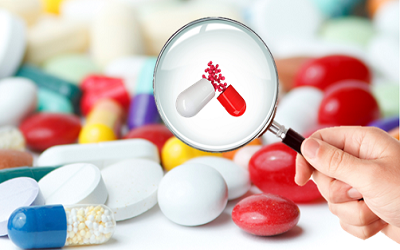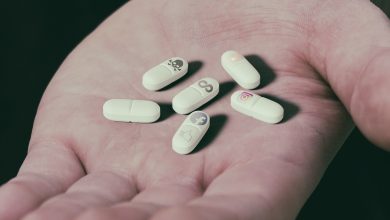Pharmacovigilance
Drug Safety Terms and Their Meaning

Drug safety is the main aspect of medical therapy that can play a major role in deciding which drug should be given to a patient. This article contains frequently used terms in medication safety. However, some terms used in drug safety can vary in how they are interpreted and used from country to country.
| Term | Meaning |
| Adverse event (AE) (largely considered synonymous with adverse experience) | Any untoward medical occurrence in a patient or clinical investigation subject administered a pharmaceutical product and which does not necessarily have to have a causal relationship with this treatment. An adverse event (AE) can therefore be any unfavorable and unintended sign (including an abnormal laboratory finding, for example), symptom, or disease temporally associated with the use of a medicinal product, whether or not considered related to the medicinal product. |
| Adverse event of special interest (AESI) | A noteworthy event for the particular product or class of products that a sponsor may wish to monitor carefully. It could be serious or non-serious (e.g. hair loss, loss of taste, impotence), and could include events that might be potential precursors or prodromes for more serious medical conditions in susceptible individuals. Such events should be described in protocols or protocol amendments, and instructions provided for investigators as to how and when they should be reported to the sponsor. |
| Adverse drug reaction (ADR) (largely considered synonymous with adverse drug effect, though see Aronson 2013 for reflections on this) | In the pre-approval clinical experience with a new medicinal product or its new usages, particularly as the therapeutic dose(s) may not be established: all noxious and unintended responses to a medicinal product related to any dose should be considered adverse drug reactions. The phrase “responses to a medicinal product” means that a causal relationship between a medicinal product and an adverse event is at least a reasonable possibility, i.e., the relationship cannot be ruled out. Regarding marketed medicinal products, a well-accepted definition of an adverse drug reaction in the post-marketing setting is found in WHO Technical Report 498 [1972] and reads as follows: A response to a drug which is noxious and unintended and which occurs at doses normally used in man for prophylaxis, diagnosis, or therapy of disease or for modification of physiological function. The old term “side effect” has been used in various ways in the past, usually to describe negative (unfavorable) effects, but also positive (favorable) effects. It is recommended that this term no longer be used and particularly should not be regarded as synonymous with an adverse event or adverse reaction. |
| Benefit-risk analysis | Examination of the favorable (beneficial) and unfavorable results of undertaking a specific course of action. (While this phrase is still commonly used, the more logical pairings of benefit-harm and effectiveness-risk are slowly replacing it). |
| Case-control studies | Studies that compare cases with a disease to controls without the disease, looking for differences in antecedent exposures. |
| Case reports | Reports of the experience of single patients. As used in pharmacoepidemiology, a case report describes a single patient who was exposed to a drug and experiences a particular outcome, usually an adverse event. |
| Case series | Reports of collections of patients, all of whom have a common exposure, examine what their clinical outcomes were. Alternatively, case series can be reports of patients who have a common disease, examining what their antecedent exposures were. No control group is present. |
| Causality assessment | Method for assigning a probability of causation to a suspected adverse drug reaction. |
| Clinical development program | This refers to all clinical trials being conducted with the same investigational drug, regardless of indication or formulation. |
| Clinical trial/study | Any investigation in human subjects intended to discover or verify the clinical, pharmacological, and/or other pharmacodynamics effects of an investigational product(s), and/or to identify any adverse reactions to an investigational product(s), and/or to study absorption, distribution, metabolism, and excretion of an investigational product(s) with the object of ascertaining its safety and/or efficacy. The terms clinical trial and clinical study are synonymous. |
| Cohort studies | Studies that identify defined populations and follow them forward in time, examining their rates of disease. Cohort studies generally identify and compare exposed patients to unexposed patients or to patients who receive a different exposure. |
| Company core safety information (CCSI) | For medicinal products, all relevant safety information contained in the company core data sheet prepared by the marketing authorization holder and which the marketing authorization holder requires to be listed in all countries where the company markets the product, except when the local regulatory authority specifically requires a modification. |
| Company core data sheet (CCDS) | For medicinal products, a document prepared by the marketing authorization holder containing, in addition to safety information, material related to indications, dosing, pharmacology, and other information concerning the product. |
| Cross-sectional studies | These examine exposures and outcomes in populations at one point in time; they have no time sense. |
| Data Monitoring Committee (synonyms: Independent Data Monitoring Committee, Data and Safety Monitoring Board) | An independent data monitoring committee may be established by the sponsor to assess at intervals the progress of a clinical trial, the safety data, and the critical efficacy endpoints, and to recommend to the sponsor whether to continue, modify, or stop a trial. |
| Descriptive studies | Studies that do not have control groups, namely case reports, case series, and analyses of secular trends. They contrast with analytic studies. |
| Development core safety information (DCSI) | An independent section of an Investigator’s Brochure (IB) identical in structure to the Company Core Safety Information (CCSI) that contains a summary of all relevant safety information that is described in more detail within the main body of the IB. It is the reference safety document that determines whether an adverse drug reaction is listed or unlisted. |
| Development of pharmacovigilance and risk management plan | A plan to conduct activities relating to the detection, assessment, understanding, reporting, and prevention of adverse effects of medicines during clinical trials. This plan should be initiated early and modified as necessary throughout the development process for a new drug or drug use. |
| Development safety update report (DSUR) | A periodic summary of safety information for regulators, including any changes in the benefit-risk relationship, for a drug, biologic, or vaccine under development, prepared by the sponsor of all its clinical trials. Format and content for periodic reporting on drugs under development. |
| Drug utilization research | The marketing, distribution, prescription, and use of drugs in a society, with special emphasis on the resulting medical, social, and economic consequences. |
| Ecological studies | These examine trends in disease events over time or across different geographic locations and correlate them with trends in putative exposures, such as rates of drug utilization. The unit of observation is a subgroup or a population rather than individuals. |
| Expected adverse drug reaction | One for which its nature or severity is consistent with that included in the appropriate reference safety information (e.g. Investigator’s brochure for an unapproved investigational product or package insert/summary of product characteristics for an approved product). |
| Good clinical practice (GCP) | A standard for the design, conduct, performance, monitoring, auditing, recording, analyses, and reporting of clinical trials that provides assurance that the data and reported results are credible and accurate and that the rights, integrity, and confidentiality of trial subjects are protected. |
| Good pharmacovigilance practice | A set of guidelines for the conduct of pharmacovigilance in the EU, drawn up based on Article 108a of Directive 2001/83/EC, by the European Medicines Agency in cooperation with competent authorities in Member States and interested parties, and applying to marketing authorization holders in the EU, the Agency and competent authorities in Member States. |
| Harm (synonymous with adverse drug reaction) | The totality of possible adverse consequences of an intervention or therapy; they are the direct opposite of benefits, against which they must be compared. Damage qualified by measures of frequency of occurrence, severity or duration. The nature and extent of actual damage that could be caused by a drug. Not to be confused with risk. |
| Hazard | The inherent capability of an intervention to cause harm (and a hazard as a potential source of harm). |
| Important identified risk, important potential risk | An identified risk or potential risk that could impact on the risk-benefit profile of the product or have implications for public health. What constitutes an important risk will depend upon several factors, including the impact on the individual, the seriousness of the risk, and the impact on public health. Normally, any risk that is likely to be included in the contraindications or warnings and precautions section of the product labeling should be considered important. |
| Individual case safety report (ICSR); synonym: Adverse (drug) reaction report | Format and content for the reporting of one or several suspected adverse reactions to a medicinal product that occur in a single patient at a specific point of time. |
| Identified risk | An untoward occurrence for which there is adequate evidence of an association with the medicinal product of interest. Examples of identified risks include: an adverse reaction adequately demonstrated in nonclinical studies and confirmed by clinical data; an adverse reaction observed in well-designed clinical trials or epidemiological studies for which the magnitude of the difference compared with the comparator group (placebo or active substance) on a parameter of interest suggests a causal relationship; and an adverse reaction suggested by a number of well documented spontaneous reports where causality is strongly supported by temporal relationship and biological plausibility, such as anaphylactic reactions or application site reactions. |
| Investigator brochure (IB) | A compilation of the clinical and nonclinical data on the investigational product(s) that is relevant to the study of the investigational product(s) in human subjects. |
| Investigational product | A pharmaceutical form of an active ingredient or placebo being tested or used as a reference in a clinical trials, including a product with a marketing authorization when used or assembled (formulated or packaged) in a way different form the approved form, or when used for an unapproved indication, or when used to gain further information about an approved use. |
| Labelled or unlabelled | For a product with an approved marketing application, any reaction which is not mentioned in the official product information is unlabelled. If it is included it is termed labeled. |
| Medication errors | Any mistake in the medication use process, including prescribing, transcribing, dispensing, administering, and monitoring. |
| Minimum criteria for reporting | For the purpose of reporting cases of suspected adverse reactions, the minimum data elements for a case are: an identifiable reporter, an identifiable patient, an adverse reaction and a suspect medicinal product. |
| Missing information | Gaps in knowledge about a medicinal product, related to safety or use in particular patient populations, which could be clinically significant. |
| Near-misses | Medication errors that have high potential for causing harm but did not, either because they were intercepted prior to reaching a patient, or because the error reached the patient who fortuitously did not have any observable untoward sequalae. |
| Number needed to harm (NNH) | The number of individuals needed to be treated for some specified period of time in order that one person out of those treated would have one harmful event (during some specified time period). |
| Observational study | A study where the investigator does not control the therapy, but observes and evaluates the results of ongoing medical care. |
| Periodic safety update report (PSUR) | Format and content for providing an evaluation of the risk-benefit balance of a medicinal product for submission by the marketing authorisation holder at defined time points during the post-authorization phase. |
| Pharmacoepidemiology | The study of the use and the effects of drugs in large numbers of people. |
| Pharmacovigilance | The science and activities relating to the detection, assessment, understanding and prevention of adverse effects or any other drug related problem. In line with this general definition, the underlying objectives of pharmacovigilance in accordance with the applicable EU legislation for are: preventing harm from adverse reactions in humans arising from the use of authorized medicinal products within or outside the terms of marketing authorization or from occupational exposure; and promoting the safe and effective use of medicinal products, in particular through providing timely information about the safety of medicinal products to patients, healthcare professionals and the public. Pharmacovigilance is therefore an activity contributing to the protection of patients’ and public health. Moreover, recently, its concerns have been widened to include: herbals, traditional and complementary medicines, blood products, biologicals, medical devices, vaccines. Many other issues are also of relevance to the science: substandard medicines, medication errors, lack of efficacy reports, use of medicines for indications that are not approved and for which there is inadequate scientific basis, case reports of acute and chronic poisoning, assessment of drug-related mortality, abuse and misuse of medicines, adverse interactions of medicines with chemicals, other medicines, and food. |
| Pharmacovigilance system | A system used by an organization to fulfil its legal tasks and responsibilities in relation to pharmacovigilance and designed to monitor the safety of authorized medicinal products and detect any change to their risk-benefit balance. |
| Post-authorization safety study (PASS) | Any study relating to an authorized medicinal product conducted with the aim of identifying, characterizing or quantifying a safety hazard, confirming the safety profile of the medicinal product, or of measuring the effectiveness of risk management measures. |
| Postmarketing surveillance | The study of drug use and drug effects after release onto the market. |
| Potential risk | An untoward occurrence for which there is some basis for suspicion of an association with the medicinal product of interest but where this association has not been confirmed. Examples of potential risks include: non-clinical safety concerns that have not been observed or resolved in clinical studies; adverse events observed in clinical trials or epidemiological studies for which the magnitude of the difference, compared with the comparator group (placebo or active substance, or unexposed group), on the parameter of interest raises a suspicion of, but is not large enough to suggest, a causal relationship; an event which is known to be associated with other products of the same class or which could be expected to occur based on the properties of the medicinal product. |
| Randomised controlled trial (RCT) | A study where the investigator randomly assigns patients to different therapies/study arms. |
| Reference Safety Information (RSI) | In periodic benefit-risk evaluation reports for medicinal products, all relevant safety information contained in the reference product information (e.g. the company core data sheet) prepared by the marketing authorization holder and which the marketing authorization holder requires to be listed in all countries where it markets the product, except when the local regulatory authority specifically requires a modification. It is a subset of the information contained within the marketing authorization holder’s reference product information for the periodic benefit-risk evaluation report. Where the reference product information is the company core data sheet, the reference safety information is the company core safety information. |
| Registry | A list of patients presenting with the same characteristic(s). This characteristic can be a disease (disease registry) or a specific exposure (drug registry). Both types of registries, which only differ by the type of patient data of interest, can collect a battery of information using standardized questionnaires in a prospective fashion. Exposure (drug) registries collect information over time on populations exposed to drugs of interest and/or specific populations. Patients can be included in a cohort study to collect data on adverse events using standardized questionnaires. They can be useful for signal amplification, particularly of rare outcomes. |
| Risk | The probability that something will happen. The probability of developing an outcome. Note 1: the term ‘risk’ normally, but not always, refers to a negative outcome. Note 2: contrary to harm, the concept of risk does not involve the severity of an outcome. |
| Risk-benefit balance | An evaluation of the positive therapeutic effects of the medicinal product in relation to the risks, i.e. any risk relating to the quality, safety, or efficacy of the medicinal product as regards patients’ health or public health. |
| Risk management | The overall aim of risk management is to ensure that the benefits of a particular medicinal product (or a series of medicinal products) exceed the risks by the greatest achievable margin for the individual patient and for the target population as a whole. This can be done either by increasing the benefits or by reducing the risks. Risk management has three stages which are inter-related and re-iterative: 1. characterization of the safety profile of the medicinal product including what is known and not known; 2. planning of pharmacovigilance activities to characterize risks and identify new risks and increase the knowledge in general about the safety profile of the medicinal product; 3. planning and implementation of risk minimization and mitigation and assessment of the effectiveness of these activities.[ |
| Risk management plan | A detailed description of the risk management system. To this end, it must identify or characterize the safety profile of the medicinal product(s) concerned, indicate how to characterize further the safety profile of the medicinal product(s) concerned, document measures to prevent or minimize the risks associated with the medicinal product, including an assessment of the effectiveness of those interventions and document post-authorization obligations that have been imposed as a condition of the marketing authorization. |
| Risk management system | A set of pharmacovigilance activities and interventions designed to identify, characterize, prevent or minimize risks relating to medicinal products including the assessment of the effectiveness of those activities and interventions. |
| Risk minimization activity (used synonymously with risk minimization measure) | An intervention intended to prevent or reduce the probability of the occurrence of an adverse reaction associated with the exposure to a medicine, or to reduce its severity should it occur. These activities may consist of routine risk minimization (e.g. product information) or additional risk minimization activities (e.g. healthcare professional or patient communications/educational materials). |
| Safety | Substantive evidence of an absence of harm. The term is often misused when there is simply absence of evidence of harm. A judgment about safety is a personal and/or social judgment about the degree to which a given risk is acceptable. |
| Safety concern | An important identified risk, an important potential risk or missing information. It is noted that the ICH definition of safety concern is: an important identified risk, an important potential risk or important missing information, i.e. includes the qualifier “important” in relation to missing information (see Annex IV, ICH-E2C(R2) Guideline). The ICH-E2E Guideline (see Annex IV) uses the terms safety issue and safety concern interchangeably with the same definition for safety concern as defined in the ICH-E2C(R2) Guideline. |
| Safety specification | Part of a Risk Management Plan (RMP) that provides a synopsis of the safety profile of the medicinal product(s) and should include what is known and not known about the medicinal product(s). It should be a summary of the important identified risks of a medicinal product, important potential risks, and missing information. It should also address the populations potentially at risk (where the product is likely to be used i.e. both labeled and off-labeled use), and outstanding safety questions which warrant further investigation to refine the understanding of the risk-benefit balance during the post-authorization period. |
| Serious adverse event (SAE) | Any untoward medical occurrence that at any dose, results in death, is life-threatening (NOTE: The term “life-threatening” in the definition of “serious” refers to an event/reaction in which the patient was at risk of death at the time of the event/reaction; it does not refer to an event/reaction which hypothetically might have caused death if it were more severe), requires inpatient hospitalization or prolongation of existing hospitalization, results in persistent or significant disability/incapacity, or is a congenital anomaly/birth defect. Medical and scientific judgment should be exercised in deciding whether other situations should be considered serious such as important medical events that might not be immediately life-threatening or result in death or hospitalization but might jeopardize the patient or might require intervention to prevent one of the other outcomes listed in the definition above. Examples of such events are intensive treatment in an emergency room or at home for allergic bronchospasm, blood dyscrasias or convulsions that do not result in hospitalization, or the development of drug dependency or drug abuse. |
| Side effect | Any unintended effect of a pharmaceutical product occurring at normal dosage is related to the pharmacological properties of the drug. |
| Signal | Information that arises from one or multiple sources (including observations and experiments), that suggests a new potentially causal association, or a new aspect of a known association, between an intervention and an event or set of related events, either adverse or beneficial, that is judged to be of sufficient likelihood to justify further action to verify. Reported information on a possible causal relationship between an adverse event and a drug, the relationship being unknown or incompletely documented previously. Note 1: a signal is an evaluated association that is considered important to investigate further. Note 2: a signal may refer to new information on an already known association. Note 3: usually more than a single report is required to generate a signal, depending on the seriousness of the event and the quality of the information. |
| Signal management process | Includes the following activities: signal detection, signal validation, signal confirmation, signal analysis and prioritization, signal assessment and recommendation for action. It therefore is a set of activities performed to determine whether, based on an examination of individual case safety reports (ICSRs), aggregated data from active surveillance systems or studies, literature information or other data sources, there are new risks causally associated with an active substance or a medicinal product or whether known risks have changed. |
| Signal validation | Process of evaluating the data supporting a detected signal in order to verify that the available documentation contains sufficient evidence demonstrating the existence of a new potentially causal association, or a new aspect of a known association, and therefore justifies further analysis of the signal. |
| Solicited reports | Those derived from organized data collection systems, which include clinical trials, registries, post-approval named patient use programs, other patient support and disease management programs, surveys of patients or healthcare providers, or information gathering on efficacy or patient compliance. |
| Sponsor | An individual, company, institution, or organization which takes responsibility for the initiation, management, and/or financing of a clinical trial. |
| Spontaneous report or spontaneous notification | An unsolicited communication to a company, regulatory authority, or other organization that describes an adverse drug reaction in a patient given one or more medicinal products and which does not derive from a study or any organized data collection scheme. |
| Stimulated reporting | Can occur in certain situations, such as after a direct healthcare professional communication (DHPC), a publication in the press or questioning of healthcare professionals by company representatives, and adverse reaction reports arising from these situations are considered spontaneous reports (see Annex IV, ICH-E2D), provided the report meets the definition of a spontaneous report as specified above. Reporting can also be stimulated by invitation from patients’ or consumers’ organizations to their members. Reporting made in the context of early phase post-marketing vigilance (EPPV), e.g. in Japan, is also considered stimulated reporting. |
| Summary of product characteristics (SmPC or SPC) | Part of the marketing authorization of a medicinal product setting out the agreed position of the product as distilled during the course of the assessment process which includes the information described in Article 11 of Directive 2001/83/EC. It is the basis of information for healthcare professionals on how to use the product safely and effectively. The package leaflet is drawn in accordance with the summary of product characteristics (based on A Guideline on Summary of Product Characteristics, Volume 2C of the Rules Governing Medicinal Products in the EU). |
| Suspected unexpected serious adverse reaction (SUSAR) | A reaction that is both unexpected and serious in nature. |
| Target population (treatment) | The patients who might be treated with the medicinal product in accordance with the indication(s) and contraindications in the authorized product information. |
| Target population (vaccine); synonym: Vaccine target population | Persons who might be vaccinated in accordance with the indication(s) and contraindications in the authorized product information and official recommendations for vaccinations. |
| Tolerability | The degree to which overt adverse effects can be tolerated by the subject. NB we can find few references for this term – advice would be appreciated to improve the glossary |
| Type A adverse drug reaction (augmented) | A dose-related reaction; features of which are that they are common, related to a pharmacological action of the drug, predictable, and with low mortality. |
| Type B adverse drug reaction (bizarre) | A non-dose-related reaction; features of which are that they are uncommon, not related to a pharmacological action of the drug, unpredictable, and with high mortality. |
| Type C adverse drug reaction (chronic) | A dose- and time-related reaction; features of which are that they are uncommon and related to the cumulative dose. |
| Type D adverse drug reaction (delayed) | A time-related reaction; features of which are that they are uncommon, usually dose-related and they occur or become apparent sometime after the use of the drug. |
| Type E adverse drug reaction (end of use) | A withdrawal reaction; features of which are that they are uncommon and occur soon after the withdrawal of the drug. |
| Type F adverse drug reaction (failure) | An unexpected failure of therapy reaction; features of which are that they are common, dose-related, and often caused by drug interactions. |
| Unexpected adverse drug reaction | An adverse reaction, the nature or severity of which is not consistent with the applicable product information (e.g., Investigator’s Brochure for an unapproved investigational medicinal product). An adverse drug reaction whose nature, severity, specificity, or outcome is not consistent with the term or description used in the local/regional product labeling (e.g. Package Insert or Summary of Product Characteristics) should be considered unexpected. |
| Validated signal | A signal where the signal validation process of evaluating the data supporting the detected signal has verified that the available documentation contains sufficient evidence demonstrating the existence of a new potentially causal association, or a new aspect of a known association, and therefore justifies further analysis of the signal. |
<





